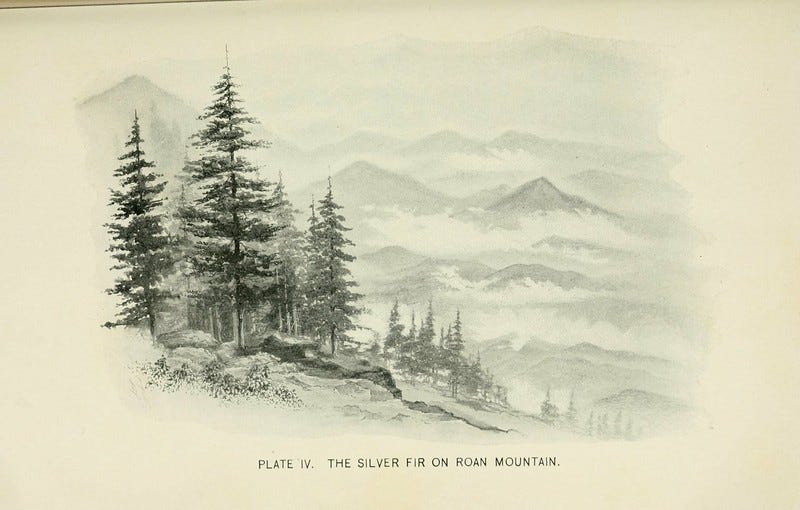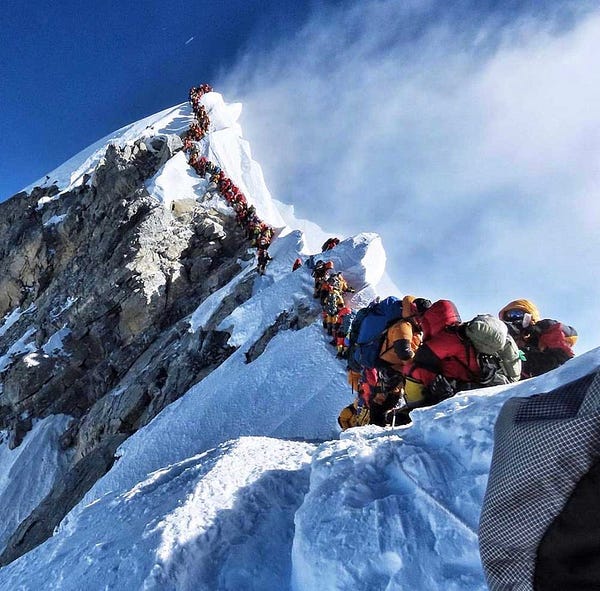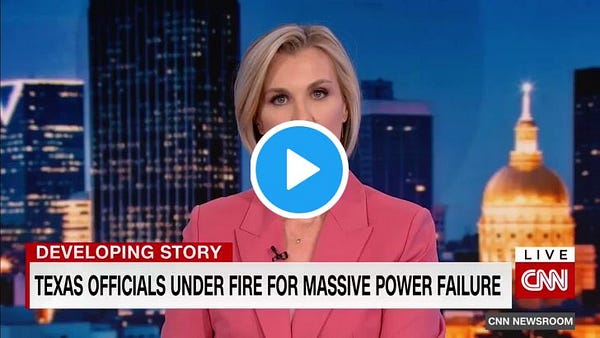🌿Wild Ones #36: Ecocultural Communication Digest
Regenerative tourism + Reimagining healthy communities for people and nature w/ Dr. Carolyn Finney + When Words Aren’t Enough: The Visual Climate Story + More!

Hi everyone! Welcome back to Wild Ones, a bi-weekly digest by me, Gavin Lamb, about news, ideas, research, and tips in ecowriting, ecolinguistics, and environmental communication. If you’re new, welcome! You can read more about why I started Wild Ones here. Sign up here to get these digests in your inbox:
🌲Environmental Keyword
‘Regenerative tourism’
“Move Over, Sustainable Travel. Regenerative Travel Has Arrived: Can a post-vaccine return to travel be smarter and greener than it was before March 2020?”
Or so asks an August 2020 article in the New York Times by journalist Elaine Glusac.
So what’s the difference between sustainable tourism and regenerative tourism? In her NYTimes article, Gusac suggests this opening definition of regenerative tourism:
“If sustainable tourism, which aims to counterbalance the social and environmental impacts associated with travel, was the aspirational outer limit of ecotourism before the pandemic, the new frontier is “regenerative travel,” or leaving a place better than you found it.”
Or take professor Jonathon Day’s definition of regenerative travel. Day, an associate professor of sustainable tourism at Purdue University, is quoted in the article distinguishing sustainable from regenerative travel like this:
“Sustainable tourism is sort of a low bar. At the end of the day, it’s just not making a mess of the place.” In contrast, “Regenerative tourism says, let’s make it better for future generations.”
Based on his research on regenerative travel, Day has created ‘the travel care code, a set of principles for travelers to keep in mind wherever they go.
However, Day also seems skeptical. On his blog, he describes ‘regenerative tourism’ more as a potentially useful new keyword to use to address key branding problems with ‘sustainable tourism,’ rather than a totally new idea. As he puts it, “It is exciting to see this enthusiasm for regenerative tourism. If the new term helps overcome some of the challenges we have with the term ‘sustainability,’ and energizes people to act on making tourism better – great!”
What about ecotourism?
I’ve been exploring the idea of ‘regenerative tourism’ more in my own research on ecotourism media and communication about popular nature-based tourism destinations in Hawai‘i and similar eco-destinations around the world. How are tourism companies, NGOs and governments actually using the term? Is ‘regenerative’ replacing ‘sustainable’ simply as a trendy new ‘eco-friendly’ adjective? Or is the term having a real impact on how the tourism industry is being used to repair damaged places and communities?
The International Ecotourism Society (TIES) defines ecotourism as “responsible travel to natural areas that conserves the environment, sustains the well-being of the local people, and involves interpretation and education.” So I’m curious how the keyword ‘regenerative’ is being used to energize something genuinely transformative. Or, potentially more likely, being used to simply ‘sustain’ business-as-usual in the tourism industry.
‘Overtourism’: A buzzword of 2017
Alongside ‘regenerative tourism,’ is another term I keep seeing: “overtourism.” I see this keyword pop up increasingly in local newspapers here in Hawai‘i, where there is growing debate about the future over tourism after Covid-19. For example, in Hawai‘i, a recent survey revealed that 2/3 of local residents agreed with this statement: “this island is being run for tourists at the expense of local people.”
“Overtourism” seems to be a growing problem around the world too. For example, on May 22, 2019, Nirmal Purja, a Nepalese mountaineer published this viral photograph from the summit of Mt. Everest. It prompted an uproar in the media about the extremely dangerous, increasing overcrowding of the mountain over the years. The traffic jam at the peak in fact led to the death of at least five climbers.


Comedian Jon Oliver even did a segment on the dangerous trend of overtourism at Everest just after the deadly congestion happened.
Communicating the future of ‘sustainable tourism’
In addition to ‘regenerative tourism,’ there’s also a growing batch of other terms being used: ‘responsible tourism,’ ‘transformative tourism,’ ‘hopeful tourism,’ ‘conscious tourism,’ ‘mindful tourism,’ ‘proximity tourism,’ and probably many others out there (“Anthropocene tourism?”).
I’m going on a bit here, and I didn’t even say anything about airlines in all of this sustainable tourism talk. But I think a good point to end on is that we should be wary of new tourism terms that try to shift all responsibility onto individuals, and their consumption habits. As climate writer Mary Annaïse Heglar puts it, “the more we focus on individual action and neglect systemic change, the more we’re just sweeping leaves on a windy day.”
I think the keyword ‘regenerative tourism’ has potential because similar to the environmental keyword from last week, ‘degrowth,’ it focuses us on the root causes of our ecological and social crises: an unsustainable extractive economy enamored with infinite growth on a finite planet. At its core, As Bill Reed, an architect with Regenesis Group says about regenerative tourism, “It’s about how to regenerate our relationship with life.”
📰 News and Events
Wild Things Conference 2021: Staying Connected Through Nature
Fueling Resistance: The contentious political economy of biofuels and fracking. By Kate J. Neville. Free book Launch Event (Feb 26).
2020 SEAL award winners in Environmental Journalism
 We are excited to present the winners of our 2020 Environmental Journalism Award: sealawards.com/environmental-… This award honors the top 12 journalists globally. Their work in informing the public is crucial. Congrats to all.
We are excited to present the winners of our 2020 Environmental Journalism Award: sealawards.com/environmental-… This award honors the top 12 journalists globally. Their work in informing the public is crucial. Congrats to all.
Chicago Wilderness Event with Dr. Carolyn Finney (past: Feb 17, 2021)
🔭 Tools & Tips & Opportunities
International Summer School in Human-Animal Studies August 16 -20. (via Zoom and free to EU-Members) (deadline March 15).
The National Science-Health-Environment Reporting Fellowships: A development program for early-career journalists.
Continuing the seaweed conversation from earlier this week: Here is a great collection of publications on the subject. Collected by George Harvey Balazs
Global Independent Sea Turtle Scientist.When Words Aren’t Enough: The Visual Climate Story (free event March 2).
📚 Research
Multispecies Care in the Sixth Extinction (essay series) Society of Cultural Anthropology.
‘Ecolabeling’: “The Effects of Environmental Sustainability Labels on Selection, Purchase, and Consumption of Food and Drink Products: A Systematic Review.” By Christina Potter, and many others in the Journal of Environment and Behavior.
Virtual Reality and the Species Divide: Immersive Storytelling for Environmental Communication. A talk by Daniel Pimentel, assistant professor in the School of Journalism and Communication, University of Oregon, Dr. Nina Adanin of the University of Ohio. Here’s more info:
“In this talk, Daniel Pimentel, SOJC assistant professor of immersive media psychology, and Dr. Nina Adanin of the University of Ohio discuss the role of immersive storytelling in driving pro-environmental change, highlighting various projects that use VR/AR to take audiences from atop tropical glaciers to deep beneath the ocean alongside sea turtles.”
In the name of security: Governmentality apparatus in a multilingual mine in Arctic Finland. By Maiju Strömmer, Journal of Sociolinguistics.


💡 Ideas
More than scenery: National parks preserve our history and culture. By Antoinette Jackson, Associate Professor of Anthropology, University of South Florida.
Who speaks for nature? Hosted by the University of Washington Program on the Environment (video). The Conversations in Environmental Communication seminar on February 17th explores this question and many others as we focus on environmental advocacy communication with a fantastic group of seasoned practitioners. Here’s more info:
“The series explores environmental communication through the perspective of a diverse group of professionals working in the arts, journalism, social media, advocacy, business, and science. We’ll investigate how messages about nature and the environment permeate our public discourse through insightful presentations and riveting Q&A with leading experts.”
Twitter's Big Oil ad loophole: Climate groups can't pay Twitter to spread political content. But the oil industry can, and it's ramping up its efforts alongside Biden's climate push. By Emily Atkin on Heated.
Communicating the Climate Crisis, New Directions for Facing What Lies Ahead. A new book By Julia B. Corbett.
💬 Quotes I’m thinking about
“We will not go back to normal. Normal never was. Our pre-corona existence was not normal other than we normalised greed, inequity, exhaustion, depletion, extraction, disconnection, confusion, rage, hoarding, hate and lack. We should not long to return, my friends. We are being given the opportunity to stitch a new garment. One that fits all of humanity and nature”
– Sonya Renee Taylor, cited in ‘Transforming the (tourism) world for good and (re)generating the potential ‘new normal’ by Irena Ateljevic in Tourism Geographies.
Thanks so much as always for your interest in my work, and if you found this digest useful, please consider sharing with others who might find it interesting too😊 I'd also love to hear from you. Leave a comment to let me know what you think about this digest:)






Wow, this is a rich and full issue! The image from Everest was arresting — no wonder they’re finding microplastics up there. I signed up for the seminar on visual communication about climate change; thanks!